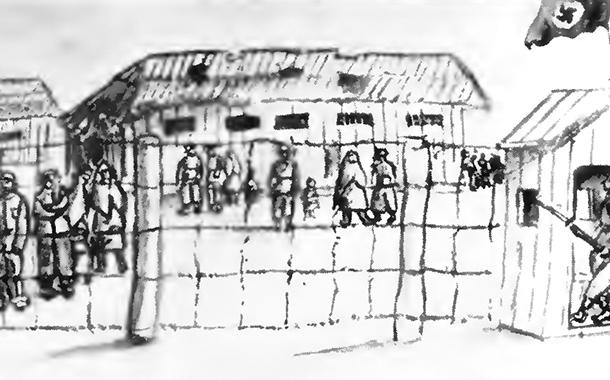<![CDATA[There are few war-torn sites in Poland that hold more secrets of horror and atrocity than the infamous Nazi Concentration Camps. One such site is the camp of Sobibor, a site that is different from somewhere like Auschwitz because its crimes and terrors were initially hidden from the public eye. The main difference between Sobibor and Auschwitz was that the fate of those in Sobibor was complete obliteration. So much so that the Nazis tried to hide each and every remnant of the camp in 1943 by concealing the grounds with a farm, asphalt and trees. According to reports, all traces of the camp were removed except for a railroad track and the local commander's house. After almost seventy years, details of the atrocities committed have once again surfaced. Reports state that almost 250000 Jews were murdered here. A series of four gas chamber walls have been found buried beneath the asphalt road close to the camp. These gas chambers go a long way in revealing the secrets of Sobibor. According to David Silberklang, the editor of Yad Vashem Studies, the discovery of the gas chambers marks an extremely important finding for all those associated with Holocaust research. He stated that one must understand that there were no survivors among the Jews who worked in the area. As a result, these gas chambers are all that are left to tell the horrific story of the day to day suffering that the prisoners suffered in the camp. The discoveries aren't limited to gas chambers. Researchers have also managed to excavate thousands of items that belonged to the victims. These possessions were buried in a well that was sealed by the Germans before they vacated the place. Among the items uncovered include gold wedding rings, earrings, a coin from Palestine that dates back to the year 1927, and a huge Star of David. Reports suggest that the Sobibor camp was established in March 1942. It is believed to have been extremely small, extending to an area of just 2000 x 1300 feet. The camp was divided into three main areas - the administration area, the barracks and the gas chambers. Right in front of the gas chambers was a road known as Himmelfahrsstrasse - the Road to Heaven. According to a Wojciech Mazurek, a Polish archaeologist, the Nazis used to breed geese at the site in order to hide the screams of the victims. This was so that the other prisoners could not hear their shouts, and remained unaware of the torment that awaited them. The camp's prisoners soon began to suspect the genocide being committed, and began to devise a plan to break free. This plan was put into action by a man named Alexander Pechersky, a Jewish prisoner of war. He led an uprising on 14th October 1943, which killed several guards and allowed hundreds of prisoners to escape into the woods. Most of these prisoners were tracked and killed, but a few managed to escape, and their triumph ultimately led to the closing of the camp. Researcher Yoram Haimi stated that it took eight years of excavating in the area before researchers finally managed to unearth the gas chambers, a discovery that changed everything. He said that with the discovery of the gas chambers, researchers have reached their ultimate goal - to prove the atrocities that once took place here. ]]>
Hidden Chamber Used to Kill Jews Unearthed
